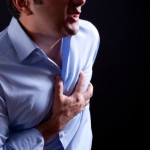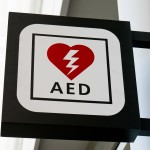The April 17, 2012 edition of The Wall Street Journal had an article titled "The Guide to Beating a Heart Attack." It had both good news and bad: since the 1970s the annual number of American deaths from heart attacks (the "med-speak" term is myocardial infarction or MI) has diminished by three fourths; on the other hand nearly a million of us will have an MI this year and many of those will die.The National Vital Statistics Reports estimate for 2010 was 595,000 deaths from heart disease (of all kinds) and the Seattle-King County 2012 estimate is 480,000 adults dying from an MI or its complications.
A quarter million die from sudden cardiac arrest (SCA) and the majority of those happen in a non-hospital location. Only 7.6% of people who have an SCA outside a hospital survive to be discharged to home. This figure varies markedly according to where you live. If you happen to reside in Rochester, NY, your odds are much better. Bystander-witnessed cardiac arrest victims there who have the typical heart rhythm disorder that leads to sudden cardiac arrest (it's usually due to a chaotic quivering called ventricular fibrillation{VF}), have a 50% chance of survival to discharge from the hospital.
My mother, as I've mentioned before, was one of the fortunate ones. She didn't live in Rochester or in the Seattle area which also has a superb track record. But she had a bystander-witnessed event, got prompt CPR and a rapid response from a trained Advanced Cardiac Life Support (ACLS) team, and lived another 16 years.
The Seattle-King County concept is termed "Community Responder CPR-AED." They knew that most people who die from SCA have VF and the only "cure" was to use a defibrillator. Most non-medical people wouldn't be able to operate the complex gadgets used in hospitals. The answer was the AED, an automated external defibrillator developed nearly twenty years ago.
The American Heart Association" Science Advisory commentary on AED use by non-medical people has a four-point program for out-of-hospital SCA: early recognition followed by a 911 call; early bystander-performed CPR; early AED use and then early ACLS.
They included several extra points I hadn't thought about, having always performed CPR-defibrillation & ACLS in hospital settings. Early CPR increase the possibility that defibrillation will stop VF and the heart will then resume its normal rhythm; it does so while providing blood flow to the brain as well as the to heart. And all the AED does is stop the VF abnormal heart rhythm enabling the heart to restart normal beating, but the heart rate may be slow to begin with, so CPR may be necessary for several more minutes.
Early CPR also increases overall survival rates; if it's not being provided, every minute between the patient's collapse and defibrillation lowered that rate by 4-6%.
Given all that, one of the first things the state of Washington did was to pass a law granting immunity from civil liability for any person (or entity) who acquires a defibrillator. Then they started wide-spread CPR and AED training (learning to use an AED is easier than learning CPR) and markedly increased their paramedic numbers.
The life-saving results have been very impressive. My question now is whether to buy an AED for our home.



